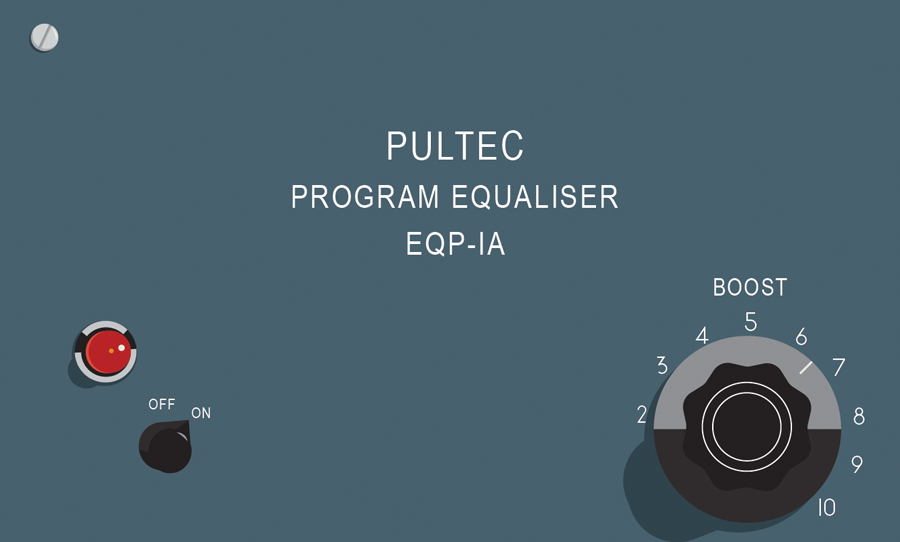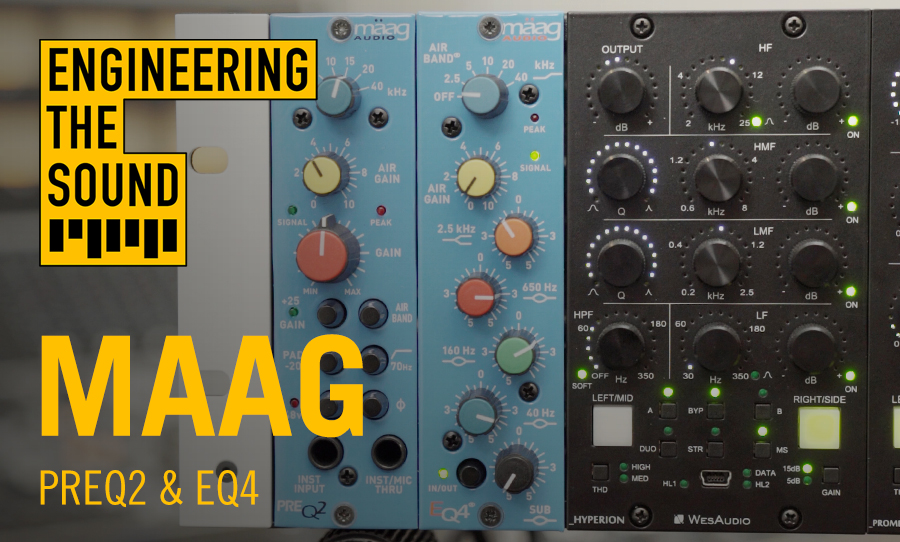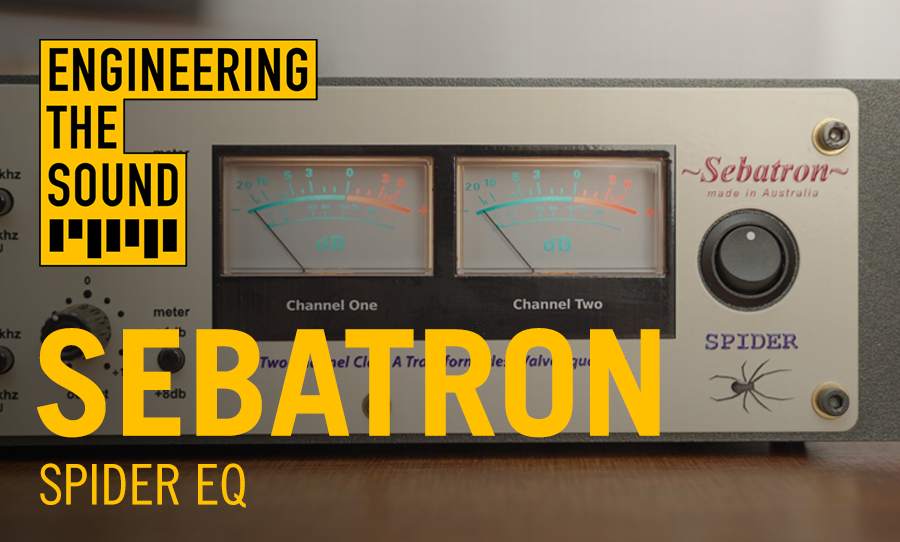Sometimes, you just need something that makes it sound better. The Pultec EQ has launched a thousand hits with its combination of simplicity and sophistication.
Some pieces of studio gear show off the bling commensurate with their price tag. Think big consoles, shiny, large-diaphragm condensers, synthesizers with way too many knobs and faders. The creations from Pultec are a marked departure from this trend though. The dark blue/grey of the front panel presents an industrial facade, the knobs chunky, the font that identifies controls, utilitarian.
What the workmanlike front panel obscures, however, is sonic art at its most sophisticated. Since its 1951 inception, the Pultec EQ has firmly installed itself as one of the bona fide staples of the outboard rack. And despite its elegant character, it couldn’t be more simple to use.
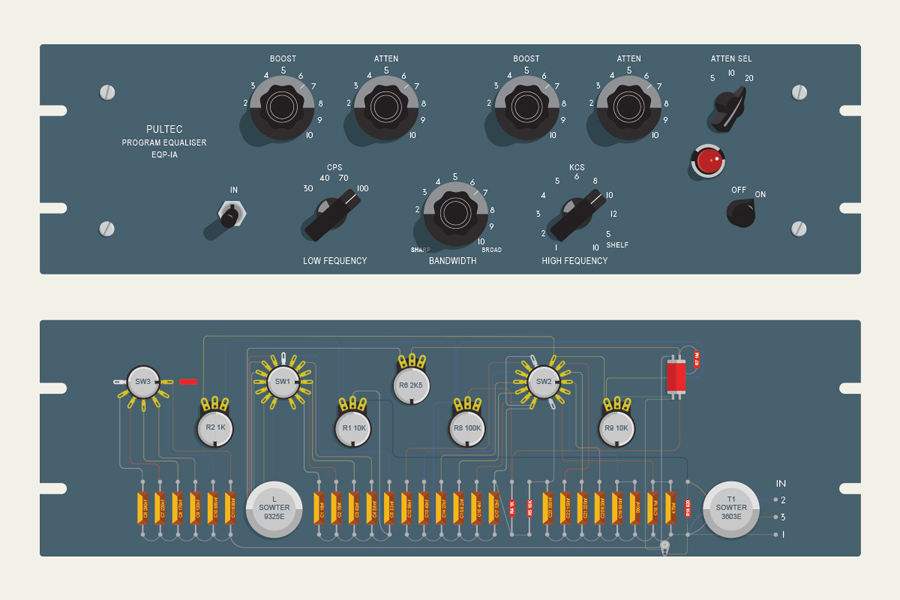
Musical machine
To call an inanimate object “musical” obviously flies in the face of logic. Musicality in performance is innately human, yet, the Pultec is one of the rare pieces that is regularly praised as such. This inherent musicality is part of the Pultec’s soul and is mainly due to the things that it doesn’t do, namely, impart a harsh resonance when boosted to the extremes.
Many other EQ units or sections fitted within console channel strips tend to focus on the analytical. This, of course, is an important quality—especially when analysing sounds that might not be ideal. Guitar sounds a bit woofy? Maybe reach for the low mid-band, adjust the Q and notch out 250Hz. That vocal sounds too sibilant? Maybe notch out a few dB at 4-6kHz and a slight boost it around 500Hz with a wide Q for more body. For a job like this, you wouldn’t reach for the Pultec. And that counts in its favour.
The Pultec works better when you think of it more musical terms. Need to add some sheen? More air? More weight? These are the kind of descriptors for which this EQ was invented. It’s more of overall tone shaper, rather than a radical renovator of sonic information. This quality makes it all the more versatile.
The controls make it extremely simple to use, which must have contributed to the Pultec EQ’s widespread popularity in the early days of commercial recording studios. A switchable low-frequency dial that selects 20, 30, 60 and 100Hz, with a dial to boost and a dial to cut. The same is system is repeated for the high end, with the selected frequencies being 3, 4, 5, 8, 10, 12kHz (with 16kHz being added on the EQP-1A).
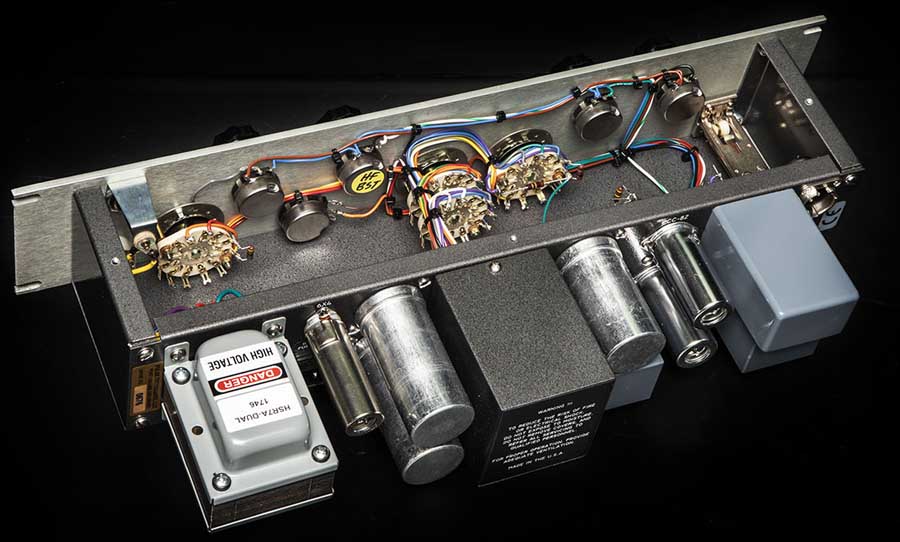
As an aside—these bandwidth selections were even more relevant to this time period than they are now. Multitrack recording as we know it today was non-existent. Multi miking drum kits, for example, would not have been possible.
Therefore the EQ challenges that we encounter today in the minutiae of specific sound sources (think individual microphones on kick drums, snare drums, guitar amps) were not a concern. Adding broad brush EQ enhancements to whole sections of an ensemble would have been far more critical at the time of the EQP-1’s inception.
The bandwidth control is right in the middle, simply marked Sharp and Broad. There is a minor quirk with the high-frequency attenuation – you only have three frequencies to pick from – 5, 10 and 20kHz. But this serves to give you more versatility when sculpting the top end.
But again, the simplicity and elegance of all the controls reinforce the point that running a sound through this EQ doesn’t require an in-depth technical understanding of mixing, or an intense familiarity with every nook and cranny of the frequency spectrum. It enhances the quality that is already inherent in the sound. But if you want a little more sizzle, some more heft, just dial it in.
Another idiosyncrasy that has long been exploited in the grand old lady is its ability to boost and cut the same frequency at the same time. If that has you scratching your head, well, it’s not actually the full story.
The boost has more gain than the attenuation has cut, plus, they affect slightly different frequencies. Therefore, it is slightly more complex than it gets credit for. However, because it lacks the detailed visual information that many other EQs offer the user, so even when ignoring the manual, you just have to go with what your ears tell you.
Intelligent design
Pulse Technologies (which Pultec derived its name from) was founded in 1951 by Eugene Shenk and Ollie Summerland. And though it seems inconceivable, every aspect of the company’s operations: from engineering, production, through to marketing, was handled by this formidable duo throughout the lifespan of the company. It all ran out of their warehouse in Teaneck, New Jersey.
Anyone who comes into contact with a Pultec device can attest to the build quality. A mass of valves, transformers and capacitors protrude from the back. If you wanted to have a stereo setup, for example, you’d need to spare 6U of rack space and make a dent in your credit card of at least $10,000.
And about those transformers: there are a lot. They’re also key to its sound. There are three individual transformers in the signal path, with each adding their own subtle imprints on the tonal character.
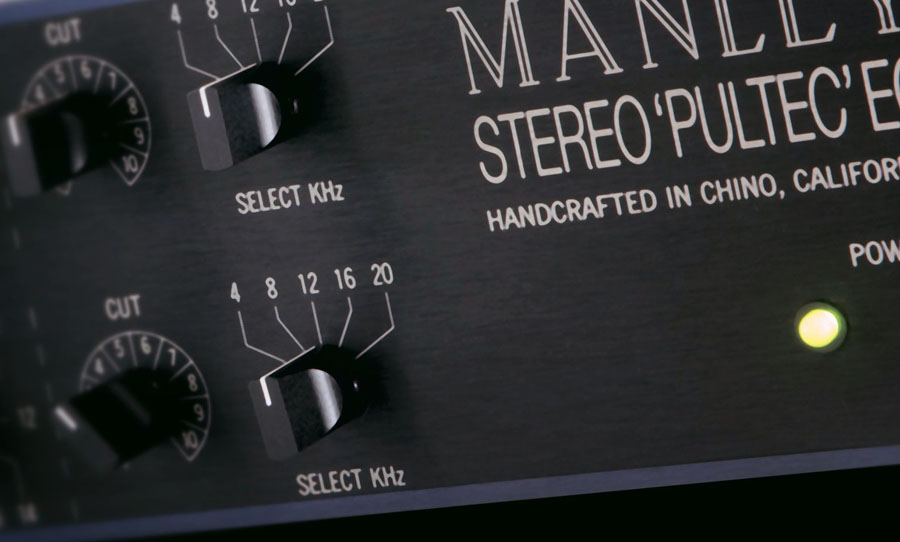
At the time the EQP-1 was first brought to life, passive equalisers were lossy devices. This means that when the signal passed through them, the output was typically attenuated by around 20dB. Of course, this kind of signal loss was unacceptable, but amplifying a signal was also a challenge. Shenk and Summerland settled on inserting a valve powered amp in the output of the EQP-1.
This tube-driven circuitry in a large part accounts for the way the unit can be driven to the extremities, but still not sound unnatural. As mentioned earlier, no woofy lumps in the bottom end, just a fullness, or a heft. No overly bright harshness in the tops, just a gloss and an almost imperceptible shine and excitement. In other words, just better.
The Modern day
So if they’re so great, why doesn’t everyone have one. Well, as previously mentioned, Pulse Technologies was strictly a two-man show, with strict quality control and hand made from end to end. Not exactly a formula for mass-market domination.
Finding original units is nigh on impossible, but when they do come up, they can fetch close to $10K US in the insanity of the vintage audio market. There are a number of companies that have made replicas of the EQP-1A, including Manley, Warm Audio, Tube-Tech and more, which can be quite expensive themselves.
Plugin versions of the Pultec EQs are also plentiful, with brands like Waves, Universal Audio, IK Multimedia and more along for the ride. Of course, all the flexibility of plugins become an advantage – easy stereo implementation for aux buses and mastering applications, saving all your favourite presets, working entirely in the box are just a few examples that spring to mind.

Back to the future
There is a tendency in the audio world to fetishize ancient relics. In the case of the Pultec, however, the story is a little more complicated. Sure the original EQP-1A is bordering on extinction in the wild, but over the decades it’s developed a life of its own, through numerous hardware interpretations and plugins. Hell, you can even build your own one.
We have all the tools to build more complex EQs. And of course, many of these units and plugins have become classics in their own way. What keeps drawing us back, is something that Eugene Shenk and Ollie Summerland understood, all the way back in the primordial times of rock and roll—just plug something in and make it sound better.
